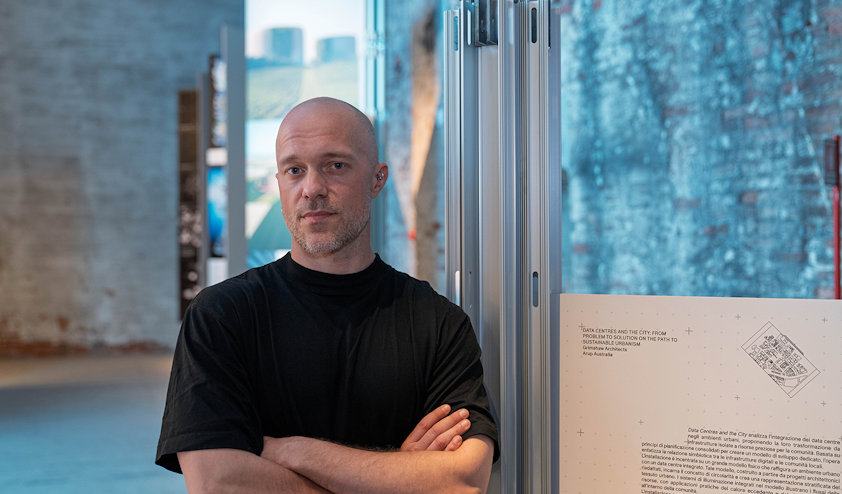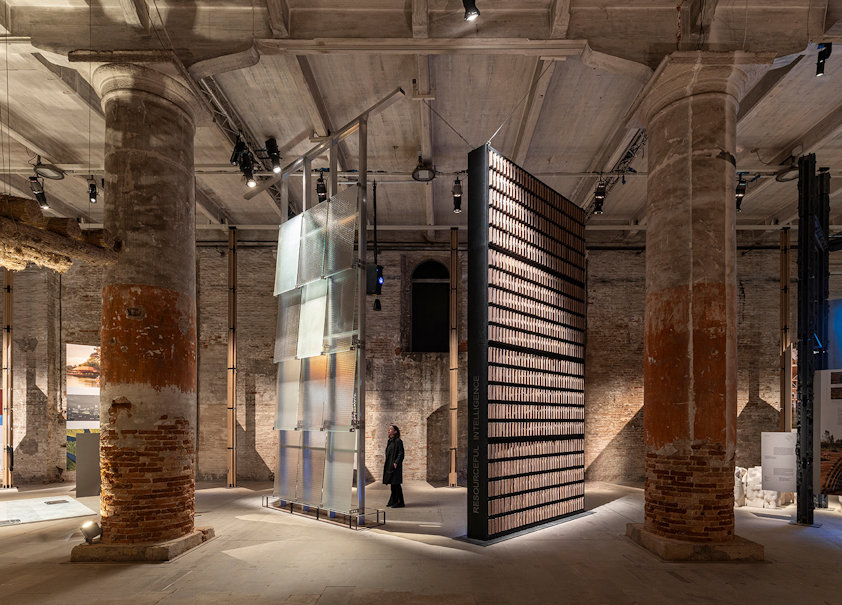Urban mining, defined simply as “the process of reclaiming raw materials from spent products, buildings and waste,” reframes the waste generated by cities and urban environments, viewing it as a highly valuable resource. Recycling and repurposing valuable building materials, such as aluminium, are at the very core of the urban mining methodology.
“Raising awareness of low-emission, recycled aluminium among architects is key to lowering the industry’s total emissions. It is essential for us to be a key consideration for architects from the outset, as sustainability starts at the drawing board. Being a supporter and presenting our recycled aluminium breakthroughs at the Biennale Architettura 2025 in collaboration with such visionary architects feels like a perfect fit,” says Director of Marketing and Communications at Hydro Extrusions, Asle Forsbak.
The building industry accounts for approximately one-third of Hydro’s revenues and the company has a long history of collaborating with architects. The Norwegian aluminium and renewable energy company is spearheading a sustainable shift in the aluminium industry, pioneering low-emission, recycled aluminium using urban mining practices.
A window into the future
Berlin based architecture studio sub presents a modular spatial system featuring Hydro CIRCAL 100R aluminium profiles extruded by Hydro as the core structure of the exhibition design throughout the entire Biennale Architettura. The system provides the structural framework for hundreds of exhibition projects exploring the convergence of natural, artificial, and collective intelligence in architecture and the built environment.
“I knew that I wanted to use 100 percent recycled aluminium for this project and found the ideal partner in Hydro. To me, the Biennale Architettura 2025 is a window into the future, an exploration of where we should be heading and of what is possible. Hydro’s recycled aluminium represents exactly that,” says architect Niklas Bildstein Zaar, co-founder of sub.
After the exhibition, the aluminium profiles, which were once light posts and greenhouse structures, will return to Hydro’s recycling facility in Feltre, Italy, to be recycled once again and transformed into new aluminium products.

Minimizing material consumption
The Milan based interdisciplinary collective of architects, designers and researchers Park, together with Accurat and Politecnico di Milano in collaboration with WICONA by Hydro, present the installation Resourceful Intelligence, investigating strategies to minimize material consumption by repurposing and enhancing the value of existing resources within the urban environment.
“The building sector is a major consumer of raw materials, significantly affecting ecological, economic and social equilibrium. Architects must shift the paradigm, transforming waste into a resource and embedding it within both the design process and its outcomes,” says Filippo Pagliani, Founding Partner of Park.

On a global scale, the buildings and construction sector is by far the world’s largest emitter of greenhouse gases (source: UNEP), accounting for a staggering 37 percent of global emissions. Hydro CIRCAL 100R, the world’s first industrial scale recycled aluminium made entirely from post-consumer scrap, leads the way with a record low 0.5 kg CO2e per kilo aluminium. Hydro’s project at the Biennale Architettura 2025 comes less than a month after Hydro completed their “R100” exhibition at Capsule Plaza during Milan Design Week.
La Biennale di Venezia was established in 1895 and is today acknowledged as one of the most prestigious cultural institutions. La Biennale di Venezia stands at the forefront of research and promotion of new contemporary art trends and organizes events in all its specific Departments: Art (1895), Architecture (1980), Cinema (1932), Dance (1999), Music (1930), and Theatre (1934) – alongside research and training activities.
The 19th International Architecture Exhibition will be held from Saturday, May 10 to Sunday, November 23, 2025, curated by the architect and engineer Carlo Ratti.
sub is a Berlin-based architecture office led by Niklas Bildstein Zaar committed to designing spaces of optimal relevance and to creating environments for culture to unfold. sub's work is rooted in deep research into sociocultural dynamics, semantics, and technology, and it spans a wide range of spatial and temporal scales.
Park is an interdisciplinary collective of architects, designers and researchers, united by the desire to shape the future of the built environment. Founded in Milan in 2000 by Filippo Pagliani and Michele Rossi, the studio operates across architectural, urban, landscape, interior, and product design, championing an interdisciplinary approach.
Published: May 12, 2025

